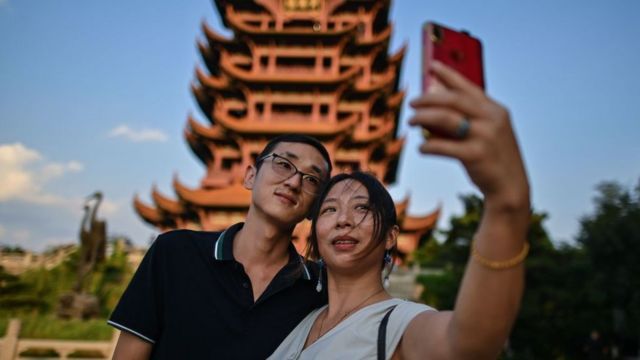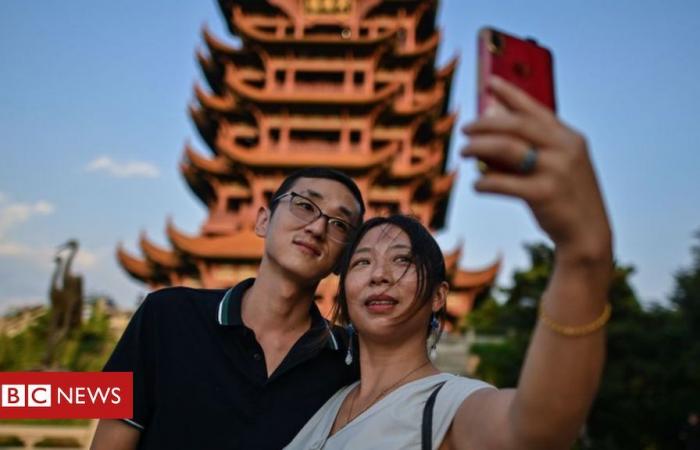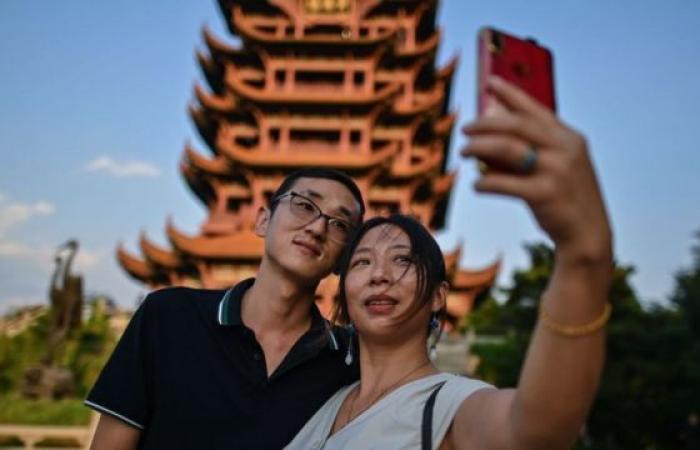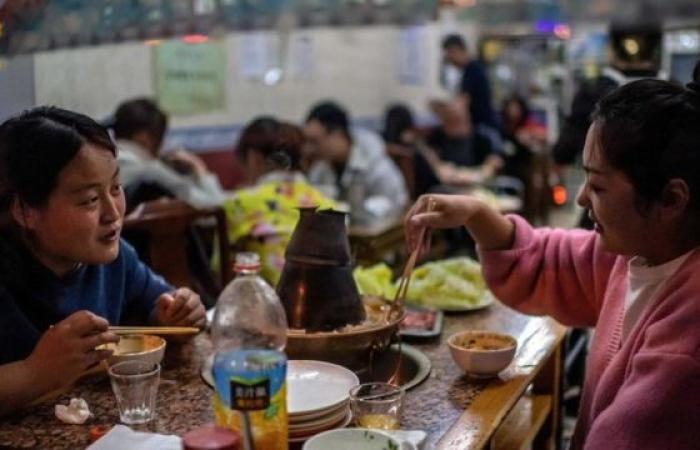- Norberto Paredes – @norbertparedes
- BBC World News
Updated 6 hours ago
Credit, Getty Images
The Yellow Crane Tower is one of the most visited tourist spots in Wuhan
In what was one of the cities most affected by a virus about which – at that time – little was said and about which nothing was known, life returned to normal.
Not only that. To the surprise of many, Wuhan – where the Sars-CoV-2 coronavirus was first detected almost a year ago – has now become one of China’s top tourist spots.
During Golden Week alone, the festive period of the Asian giant that runs from October 1 to 7, did Hubei Province attract more than 52 million tourists that generated revenues of approximately US $ 5.2 billion, equivalent to R $ 29 billion .
And Wuhan, the regional capital, received almost 19 million visitors, according to data from the provincial Department of Culture and Tourism.
At the same time, much of the world is hit by a second wave of covid-19, which in some countries has even affected more people than the first.
In France, the government imposed a curfew in eight cities, including the capital, Paris. In the United Kingdom, there is a similar situation: London and other parts of England have entered a kind of return to confinement, which prevents them from meeting people from others who live in other houses indoors.
On the American continent, the situation is no better.
For the first time since the end of July, the United States (which already accumulates at least 225 thousand deaths from coronavirus) exceeded 83 thousand cases in a single day on Friday (10/23), while Latin America and the Caribbean surpassed 10 million positive cases, with Brazil, Argentina, Colombia, Peru and Mexico topping the list by number of cases.
However, on the other side of the world, “the heroic city”, as Chinese President Xi Jinping has dubbed it, the virus seems an unpleasant and especially distant reminder, if we believe the official figures.

Credit, Getty Images
Wuhan welcomed nearly 19 million tourists from 1 to 7 October, more than any other Chinese city
The Chinese government guarantees that in Wuhan there is not a single case of coronavirus. However, several organizations and experts believe that this statement should be viewed with caution.
Wuhan’s ‘rebirth’
In the framework of the celebrations of the National Day of the People’s Republic of China, the government of Xi Jinping organized an act at a train station in Wuhan and, in a video of the event published on social media, thousands of people are seen gathered singing and waving Chinese flag.
“Wuhan is reborn after covid-19 with more strength and vitality,” said Hua Chunying, deputy director of the Information Department at the Ministry of Foreign Affairs, when posting a promotional video on Twitter.
For Vivian Hu, editor of the BBC’s Chinese service, the government of Xi Jinping, with the help of state media, is trying to convey the image that everything is fine in Wuhan, that people are having fun and that prosperity and normalcy are return.
“And to some extent, it is true: people are traveling all over China and mainly to Wuhan. Yes, the city seems to have returned to normal, but for many people and many businessmen things are not as they were before and there is still a lot of concern “, says the journalist, in Hong Kong.
“But the message we got from Chinese propaganda is that the government was able to successfully control the pandemic,” he adds.

Credit, Getty Images
The government of Hubei announced in August that around 400 tourist spots in the province would be open to visitors from all over the country free of charge, one of which was the Yellow Crane Tower.
As of October 27, China had accounted for 91,185 cases of covid-19 and less than 5,000 deaths, while the United States, with a population four times smaller, recorded more than 8.7 million cases and at least 225,000 deaths.
“There are new cases in China, but apparently not in Wuhan. If there are new cases, the government makes it clear that it is doing everything possible to contain the new outbreak efficiently and quickly,” explains Hu.
The policies that boosted the sector
The resurrection of Wuhan as a favorite tourist destination for the Chinese is not due to chance. In fact, it is partly due to government policies.
In August, the Hubei government announced that around 400 tourist spots in the province would be open to visitors from all over the country free of charge from the 8th of that month until the end of the year.
And although the number of visitors to these places is limited to 50% of their maximum capacity and visitors must be subjected to temperature controls, the response was unexpected.
Many of the tourists who chose Wuhan during Golden Week visited the historic Yellow Crane Tower, located in the city center. The current structure, built in 1981, was one of the places of free entrance sponsored by the Chinese government.
According to the Xinhua news agency, at least 1,000 travel agencies and more than 350 hotels have joined the government campaign, offering discounts to visitors.
For some analysts, the resurgence of Wuhan as a tourist destination demonstrates the Chinese confidence in local authorities in handling the pandemic and represents a golden opportunity to boost the degraded industry.
A government ‘victory’
It also symbolizes a victory for the Chinese government.
Vincent Ni, a China expert at the BBC’s world service, points out that the Chinese government may indeed be using Wuhan for propaganda purposes, but the campaign is “fact-based”, which “shows that the situation has improved”.

Credit, Getty Images
In October, 38 couples attended a collective wedding; some of them had postponed their marriages due to the coronavirus
“People know that Wuhan is better, no one would visit the city if there was a coronavirus. The Chinese are willing to travel to Wuhan, which used to be the epicenter of covid-19 and that, from the government’s point of view, is a victory.”
While the sector is recovering after a complete shutdown at the beginning of the covid-19 outbreak, tourism revenue at the Asian giant is still expected to drop 52% in 2020 compared to 2019, and the number of trips will decrease 43%, according to research institution China Tourism Academy (CTA).
For Ni, things are “gradually” returning to normal, but there are still doubts as to whether the situation will last.
“With winter approaching, there are doubts as to whether or not we will have a second wave. I think this unknown is present in the minds of all Chinese people, but for now people are enjoying the relaxation of restrictions and the ‘normalcy’ return,” he says him.
Double-edged sword
The Chinese expert points out that the sensation of normality is repeated throughout the country and that fewer and fewer people with masks are seen on the streets of the Asian country.
For the more than 20 million inhabitants of Beijing, the country’s capital, the use of masks is no longer mandatory, for example.

Credit, Getty Images
In the Chinese capital, masks are no longer mandatory
“This, on the one hand, shows that the situation has improved significantly, but on the other hand, it can be a double-edged sword, because the virus has not disappeared, we don’t have an effective vaccine at the moment and, if people let their guard down, a second wave can be catastrophic. “
According to projections by the International Monetary Fund, China will be the only major world economy to register growth this year, with expansion of 1.9% of the Gross Domestic Product (GDP).
Although the tourism industry seems to be seeing light at the end of the tunnel, other sectors of the economy and, especially, the income of the most vulnerable populations have suffered a heavy blow in recent months.
“The central government is trying to get the economy back on track, but young people in big cities can’t get jobs and don’t even have any more money to pay rent, so there is a new trend that many are leaving cities,” explains Vivian Hu .
“Many people may be traveling all over China, but it is undeniable that the shadow of the coronavirus still exists. People know this, but they try to get their day to day back to normal. It is a good intention, but it takes time and it is true that it’s difficult to get an objective account of what’s really going on. “

Have you watched our new videos on YouTube? Subscribe to our channel!
These were the details of the news Wuhan: from the epicenter of the pandemic to one of China’s... for this day. We hope that we have succeeded by giving you the full details and information. To follow all our news, you can subscribe to the alerts system or to one of our different systems to provide you with all that is new.
It is also worth noting that the original news has been published and is available at time24.news and the editorial team at AlKhaleej Today has confirmed it and it has been modified, and it may have been completely transferred or quoted from it and you can read and follow this news from its main source.






